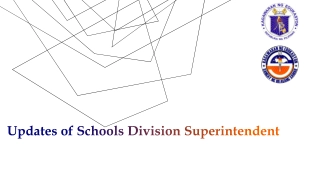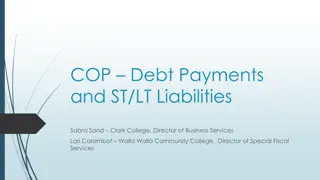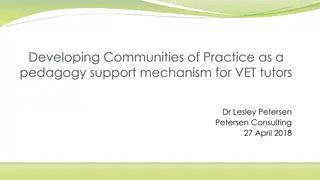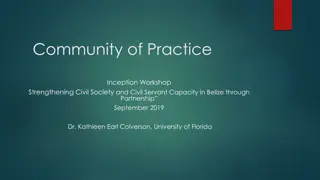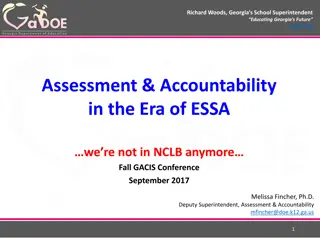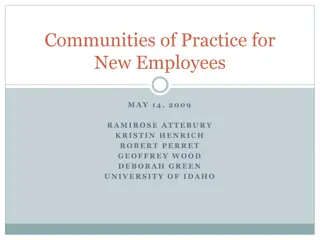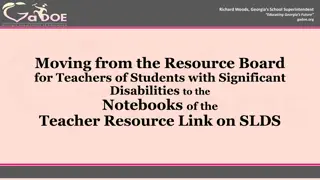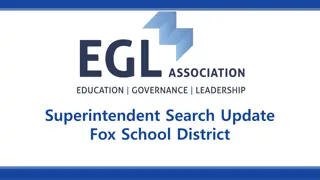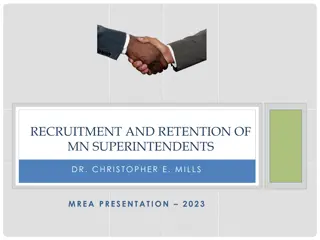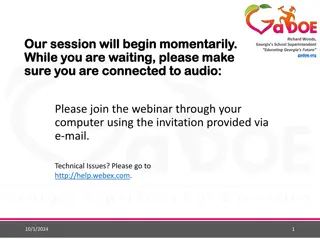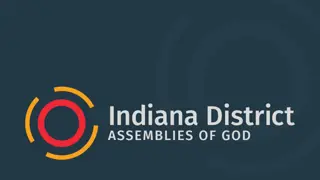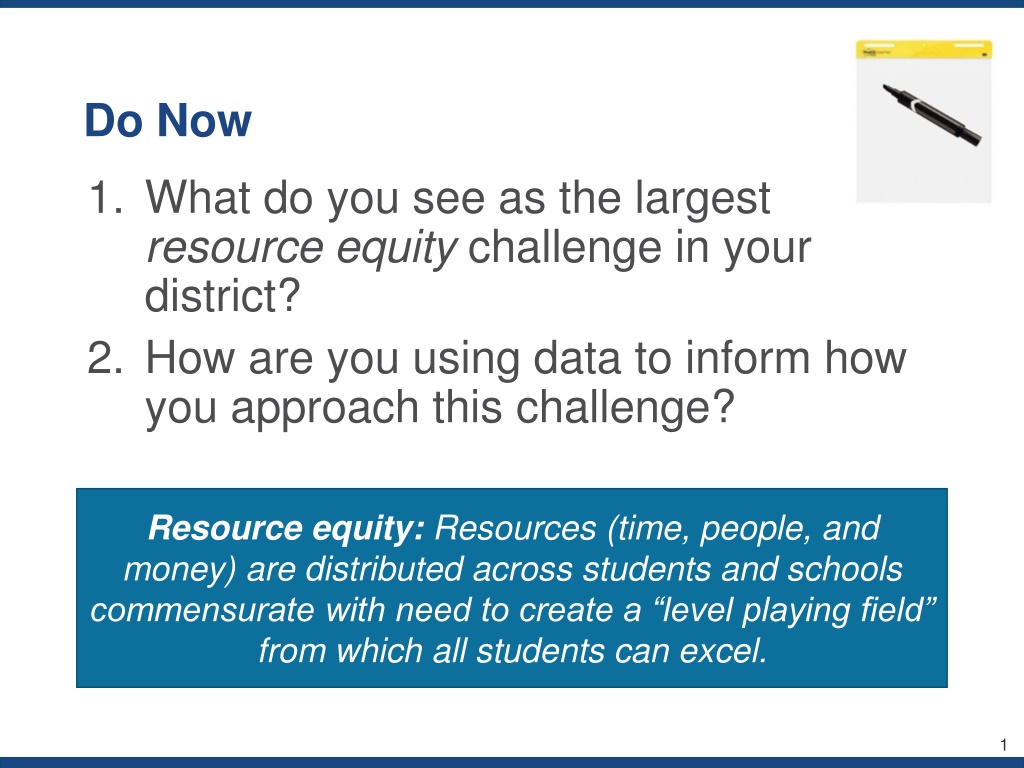
Addressing Resource Equity Challenges in District Strategic Planning
Learn about the resource equity challenges faced in district strategic planning and how data is utilized to address them effectively. Explore how resources such as time, personnel, and funding are distributed to ensure all students have equal opportunities to excel.
Download Presentation

Please find below an Image/Link to download the presentation.
The content on the website is provided AS IS for your information and personal use only. It may not be sold, licensed, or shared on other websites without obtaining consent from the author. Download presentation by click this link. If you encounter any issues during the download, it is possible that the publisher has removed the file from their server.
E N D
Presentation Transcript
Do Now 1. What do you see as the largest resource equity challenge in your district? 2. How are you using data to inform how you approach this challenge? Resource equity: Resources (time, people, and money) are distributed across students and schools commensurate with need to create a level playing field from which all students can excel. 1
District Strategic Planning and Resource Allocation Community of Practice (CoP): Superintendent Session 6/30/2017
We are a technical assistance initiative designed to support State and district school improvement efforts.
We collaborate with states, districts, and technical assistance providers to:
ERS: Our Mission ERS is a non-profit organization dedicated to transforming how urban school systems organize resources (people, time, technology, and money) so that every school succeeds for every student.
Do Now 1. What do you see as the largest resource equity challenge in your district? 2. How are you using data to inform how you approach this challenge? Resource equity: Resources (time, people, and money) are distributed across students and schools commensurate with need to create a level playing field from which all students can excel. 7
Timeline for Activities This session is the first of three key conversations in the District Strategic Planning and Resource Allocation Community of Practice (CoP). April Data collection and analysis begins (Pilot group) June 29 Post CoP Learnings from pilot shared back with Consortium and inform future work July 14 Financial reporting and transparency (Pilot group, in Boston) Kickoff online collaboration session (Pilot group) March April May June July Aug. Sept. 2018+ August or September TBD June 30 March Pilot district selection Sample reports and communicating with stakeholders (Pilot group, online collaborative) Exploring resource equity risks and opportunities (Full group, in DC) Today Key sessions
Pilot Group Objectives 1. Methodology: Explore how current financial reporting structures and practices prevent fully accurate per pupil reporting at school level Identify imperatives to communicate to state level methodology developers 2. Reporting Strategy: Understand the primary drivers and causes of variation in per pupil spending Identify supporting school level data needed to responsibly interpret and explain spending variation 3. Engagement: Define key messages to facilitate discussions of spending equity, focusing on priority policy options and approaches
Goals for Todays Session 1. Explore the risks and opportunities of using ESSA s financial transparency requirement as part of your equity strategy 2. Capture feedback on how best to approach this work to maximize opportunity and minimize risk
Todays Agenda Time Topic 9:00 9:20 Welcome, introductions, and norms What we know about ED implementation of this ESSA provision Financial reporting and transparency: Risks and opportunities 9:20 9:25 9:25 10:20 10:20 10:30 Closing: Next steps 11
Per-pupil Expenditure Reporting in ESSA A State and its LEAs must annually report per- pupil expenditures of Federal, State, and local funds on State and LEA report cards, disaggregated by source of funds. Per-pupil expenditures must include actual personnel and non-personnel expenditures. A State and its LEAs must report per-pupil expenditures for the LEA as a whole and for each school served by the LEA for the preceding fiscal year. ESEA section 1111(h)(1)(C)(x), (h)(2)(C) 12
Reporting Timeline As stated in the June 28, 2017, Dear Colleague Letter, the U.S. Department of Education is giving States and LEAs until the 2018-2019 school year to report on annual report cards regarding per- pupil expenditures as described on the previous slide. If an SEA elects to delay reporting, on the 2017- 2018 report cards, the SEA and its LEAs must provide a brief description of the steps the SEA and LEAs are taking to ensure that information on the per-pupil expenditures will be included beginning with report cards for the 2018-2019 school year. 13
Todays Agenda Time Topic 9:00 9:20 Welcome, introductions, and norms What we know about ED implementation of this ESSA provision Financial reporting and transparency: Risks and opportunities 9:20 9:25 9:25 10:20 10:20 10:30 Closing: Next steps 14
5 min Greater Transparency = Greater Resource Equity? And they 1) do so accurately and completely, 2) identify causes of funding variation, 3) include other metrics to show full equity picture It will enable report users (parents, community members, teachers, principals, district staff) to generate key insights Which will mean resources will be distributed more effectively and equitably If districts report per-pupil expenditures at the school level... That will ultimately lead to specific actions (equity moves) Then student performance will improve. What is the theory that greater transparency in funding at the school level leads to greater equity in outcomes for kids?
Drives higher spending Variation in Spending Variation does not in itself mean resource inequity. We must examine it within the school s overall context. Drives lower spending High Avg. Teacher Compensation? Accurate Enrollment Projection? Large SWD Population? Large FRL Population? Large ELL Population? School Size? School $ PP Over- Projected A High Low Above avg. Above avg. Average Small B High Low At Projection Average Above avg. Above avg. Small High $ PP Over- Projected C High Average Below avg. Average Average Small Over- Projected D High Low Above avg. Above avg. Above avg. Average E High Average At Projection Above avg. Average Above avg. Average V Low Average At Projection Below avg. Average Average Average Under- Projected W Low Average Average Below avg. Above avg. Large Low $ PP X Low Average At Projection Average Average Below avg. Average Under- Projected Y Low High Below avg. Below avg. Below avg. Large Under- Projected Z Low High Below avg. Below avg. Average Large
15 min Outcomes and Risks Based on what you know about your equity and excellence challenges and any past efforts to share spending data 1. What are the most positive outcomes you can imagine from increasing transparency around school level spending and equity metrics? 2. What are the biggest risks you can imagine? 3. How might advocates and stakeholders in your community use this data? What steps could you take to empower them to use it well and fairly? Take 5 minutes to write down your thoughts to share with a partner.
15 min Maximizing and Mitigating Risks In order to maximize the positive and mitigate the risks of this financial transparency requirement, what must be true: 1. About the reporting? 2. To build political capital? 3. To engage stakeholders? What does that mean for how we must approach this work to maximize opportunity and minimize risk?
15 min Working with Your SEAs 1. How can your team influence SEA design and implementation around this requirement (methodology, reporting, etc.) - and is this an opportunity to provide direction and leadership? 2. What resources/supports would you need to effectively engage your SEA on this?
Todays Agenda Time Topic 9:00 9:20 Welcome, introductions, and norms What we know about ED implementation of this ESSA provision Financial reporting and transparency: Risks and opportunities 9:20 9:25 9:25 10:20 10:20 10:30 Closing: Next steps 20
10 min Self-Reflection and Discussion What two learnings from this discussion will you share with your teams (e.g., CFO, CAO, Strategy Officers, etc.) when you return to your districts? Take 3 minutes to write down your thoughts to share with a partner.
This document was produced by American Institutes for Research under U.S. Department of Education contract number ED-ESE-15-A-0006/0001. The content of this document does not necessarily reflect the views or policies of the U.S. Department of Education, nor does mention of trade names, commercial products, or organizations imply endorsement by the U.S. government. Authorization to reproduce this document in whole or in part for educational purposes is granted.

